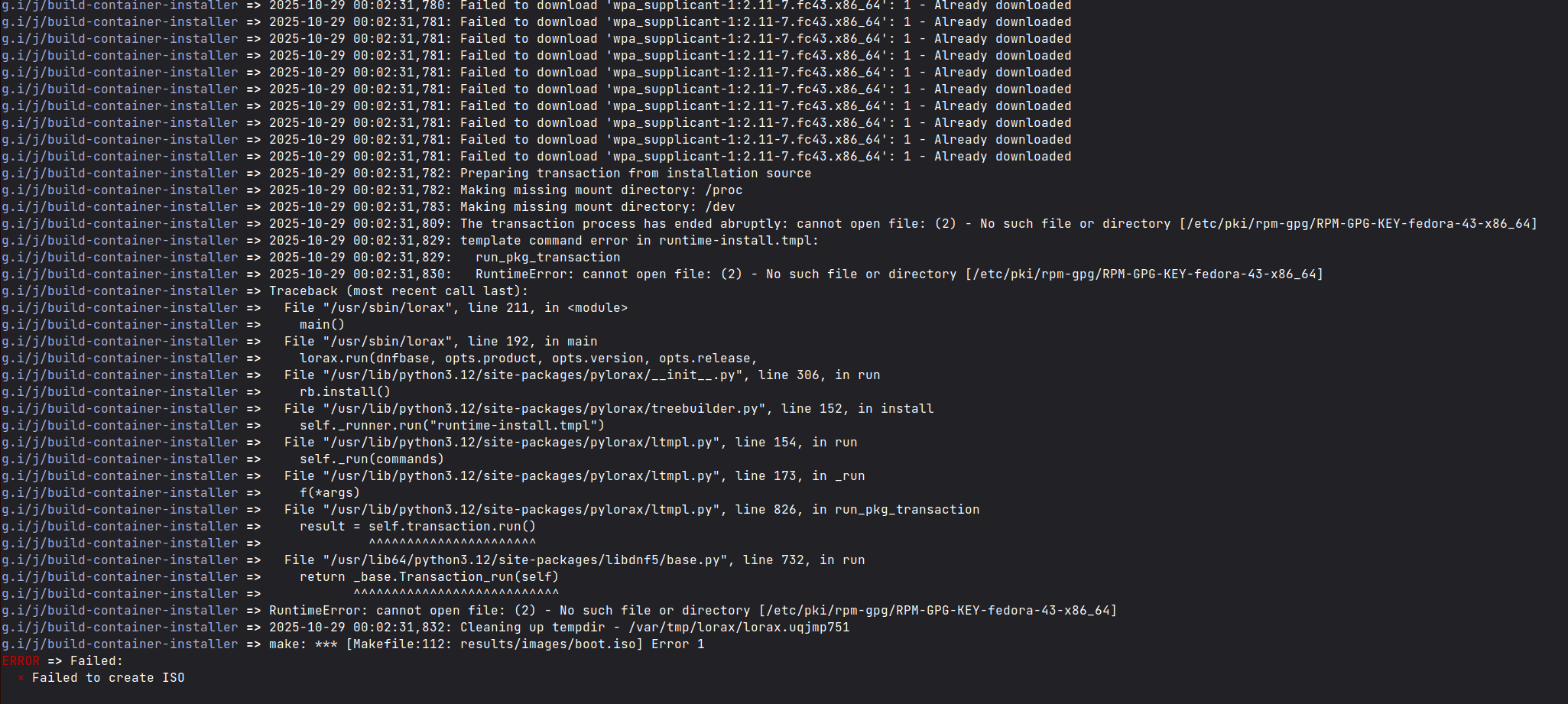script module, args / env
script module, is there a way to set env vars or args to my script? For example, if there is some script and I would normally run SOME_ENV_VAR=foo ./myscript or ./myscript bar , is there some way to do that? E.g.
```
type: script
scripts:
- SOME_ENV_VAR=foo myscript.sh bar...How-to migrate off EOL aurora-hwe-dx
aurora-hwe-dx, and I just learned that both the hwe aspect and the dx aspect of the underlying image are now EOL. Has anyone had any success migrating off of the hwe / dx images? Is there an ideal path? The official announcements (most recently here: https://universal-blue.discourse.group/t/stargazer-4-winter-is-coming-and-f43-hits-stable/11107#p-30845-goodbye-to-nvidia-legacy-and-hwe-5) state that we should be able to re...no user folders with sddm
nvidia drivers fail to install
silverblue-nvidia base image, which already included nvidia akmods. However, after the last reboot, I get prompted by Gnome Software to enroll MOK for some other NVIDIA drivers. But when I enter my password to do that, I get the error Failed to call 'kmodgenca', because that command is not available on the system.recipe will build locally but not via github-actions
Issue updating to the latest CLI due to invalid signature
podman run --pull always --rm ghcr.io/blue-build/cli:latest-installer | /bin/bash
...Fedora 43 broke my really simple image (exclude filtering issue)
How does one use the akmods module to install zfs?
Cosmic layered on top of Bazzite broke last night.
Blubuild cli image creation download speed.
/etc/dnf/dnf.conf with the contents of
``
# see man dnf.conf` for defaults and possible options
[main]...default-flatpaks module, no flathub
rpm-ostree upgrade failing: failed to invoke method OpenImage
rpm-ostree upgrade to grab my latest image.
error: Preparing import: Fetching manifest: failed to invoke method OpenImage: Requesting bearer token: received unexpected HTTP status: 403 Forbidden
error: Preparing import: Fetching manifest: failed to invoke method OpenImage: Requesting bearer token: received unexpected HTTP status: 403 Forbidden
ISO Enrollment Password Clarification
Using BlueBuild Stages
Recommended way to rollback to specific image version in ghcr.io
20251106. Should I just do rpm-rebase ostree-image-signed:docker://ghcr.io/my-account/os-image:20251106?ISO Custimzation
Key file does not have key “VERSION_ID” in group “os-release”
os-release contents so that a date is included that shows when the image was created. For example, silverblue does the following formatting style and is preserved in blue-build systems if you don't override the PRETTY_NAME entry.
Fedora Silverblue 43.20251105.0...| tee /etc/os-release insteadImproper group for dumpcap (wireshark-cli)

Error while generating an ISO with bluebuild CLI
blue-build CLI tool via Podman on Linux Mint. In the past I've successfully been able to generate ISOs of custom images created with Bluebuild. This time, however, I'm running into an error that ends with the following line:
```...